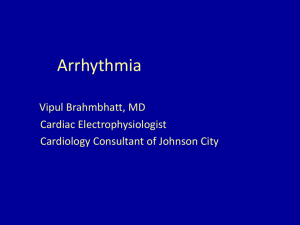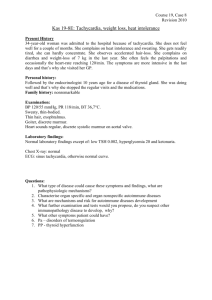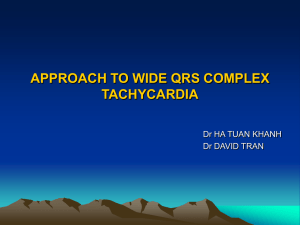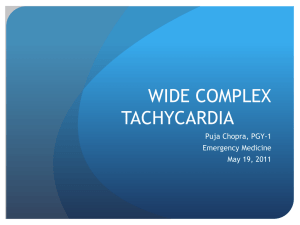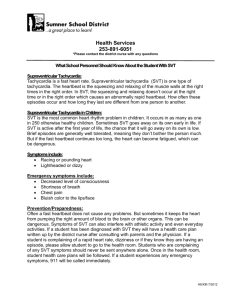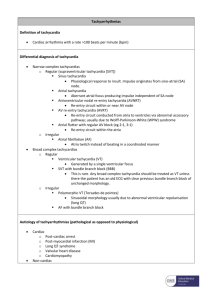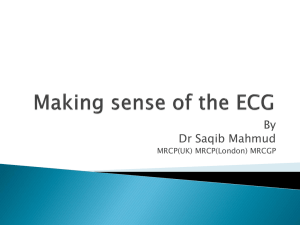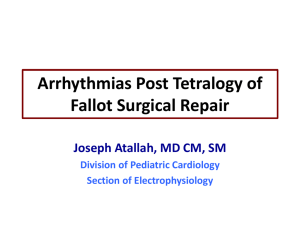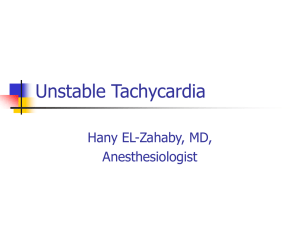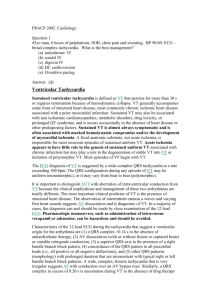Approach to narrow complex tachycardia
advertisement
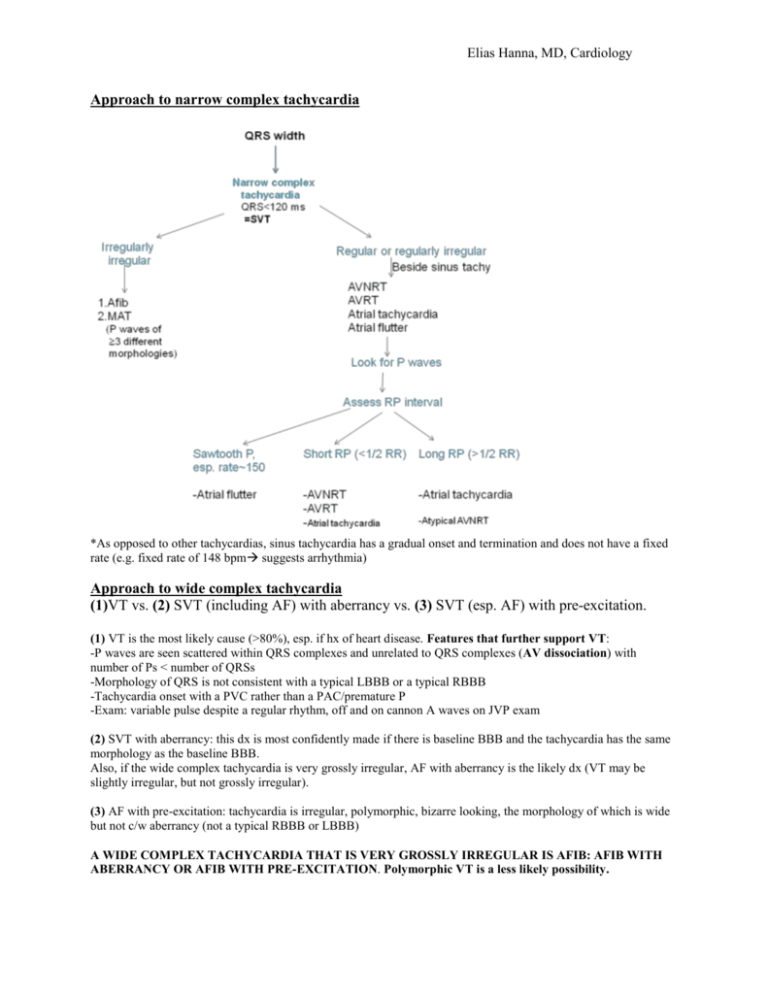
Elias Hanna, MD, Cardiology Approach to narrow complex tachycardia *As opposed to other tachycardias, sinus tachycardia has a gradual onset and termination and does not have a fixed rate (e.g. fixed rate of 148 bpm suggests arrhythmia) Approach to wide complex tachycardia (1)VT vs. (2) SVT (including AF) with aberrancy vs. (3) SVT (esp. AF) with pre-excitation. (1) VT is the most likely cause (>80%), esp. if hx of heart disease. Features that further support VT: -P waves are seen scattered within QRS complexes and unrelated to QRS complexes (AV dissociation) with number of Ps < number of QRSs -Morphology of QRS is not consistent with a typical LBBB or a typical RBBB -Tachycardia onset with a PVC rather than a PAC/premature P -Exam: variable pulse despite a regular rhythm, off and on cannon A waves on JVP exam (2) SVT with aberrancy: this dx is most confidently made if there is baseline BBB and the tachycardia has the same morphology as the baseline BBB. Also, if the wide complex tachycardia is very grossly irregular, AF with aberrancy is the likely dx (VT may be slightly irregular, but not grossly irregular). (3) AF with pre-excitation: tachycardia is irregular, polymorphic, bizarre looking, the morphology of which is wide but not c/w aberrancy (not a typical RBBB or LBBB) A WIDE COMPLEX TACHYCARDIA THAT IS VERY GROSSLY IRREGULAR IS AFIB: AFIB WITH ABERRANCY OR AFIB WITH PRE-EXCITATION. Polymorphic VT is a less likely possibility.
